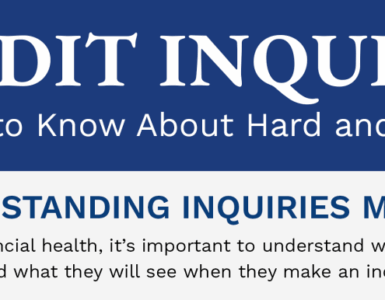Building or maintaining one credit score can feel daunting enough. But the truth is, most of us have dozens of slightly different scores out there that are used by lenders to decide if they should take a risk and loan us money and how much interest we should pay.
What is a Credit Score?
A credit score (which can range from 300 to 850) is like a report card that stays with us throughout our lives and reflects how we handle money. The three-digit number is typically defined by the amount of debt you owe if your bills are paid on time, the number of credit cards you have (and how long you have had them), and if you have filed for bankruptcy in the last 10 years, among other factors.
The Credit Bureaus
There are three major consumer credit reporting companies
- Experian
- Equifax
- TransUnion
They collect information about you from financial institutions, your credit card issuers, and public records that are then used to determine your credit score.
VantageScore. One commonly used score is the VantageScore® — which is the one you get through SavvyMoney — that’s based on a scoring model developed in 2006 by the three bureaus mentioned above.
Different Credit Scores
Here’s where the multiple versions of your score come in.
Using different mathematical algorithms, VantageScore and others created industry-specific credit scores which can include separate scores for businesses such as auto lenders and credit card companies. Each scoring version is calculated by modifying how certain parts of your credit history are weighted. When it comes to mortgage lenders, though, they tend to pull a score from all three credit reporting agencies and then typically use the lowest of the three to determine if you get a loan and how much money you will be charged in interest.
The higher your score, the less of a risk you are and the lower your interest rate should be.
Pulling Credit
Once you permit a loan application, a potential lender may look at one score or more, from the same scoring company or all three, and they may also pull from different models for the same loan. What can be frustrating is that you likely won’t know, or have any control over which score(s) your lender reviews. You can always ask but financial institutions are not obligated to tell you.
- Trended Data. Some good news for borrowers in recent years is that VantageScore 4.0 now incorporates something known as trended data into how it computes credit scores. Trended data can be considered a way of looking back at someone’s history to see if they are making progress over time. So instead of seeing your score as a quick snapshot of bill-paying and other credit behavior, it rewards those whose credit habits are moving in the right direction, such as paying down debt and not carrying large balances on credit cards.
- Medical Bills. One other change in the last few years is that unpaid medical bills are not considered until after 6 months now on your credit reports.
Keeping a Good Score
How can you best influence all of your credit scores?
To build or maintain good scores:
- Pay your bills on time every single month
- Keep your balances low by using only 30% or less of what’s available to you
- Don’t apply for credit cards you don’t truly need
- Don’t close old accounts you no longer use unless they are charging fees.
You should also make sure to check your credit reports every few months to determine if there are errors that could be dragging down your scores. You have access to your scores for free through SavvyMoney.
With reporting by Casandra Andrews






